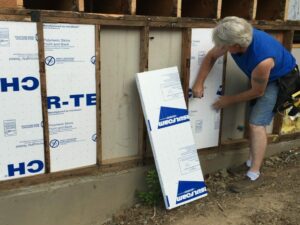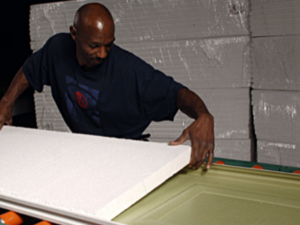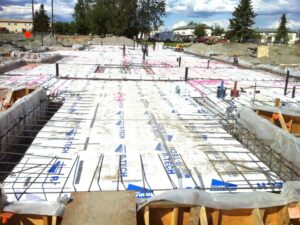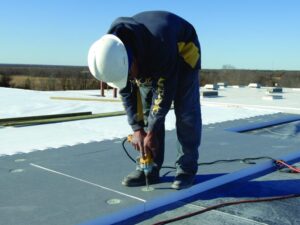EPS: the practical roof insulation solution for residential projects
 Much of a structure’s heat loss occurs through the roof, which is why proper roof insulation plays such a critical role in reducing energy consumption and supporting a comfortable living environment for occupants.
Much of a structure’s heat loss occurs through the roof, which is why proper roof insulation plays such a critical role in reducing energy consumption and supporting a comfortable living environment for occupants.
To support energy-efficient building construction, many roofing professionals turn to expanded polystyrene (EPS) insulation. With its high, reliable thermal performance, EPS will help prevent heat from escaping a house in the winter months and stop the heat from making its way into the cool interior during the summer months.
Not only is EPS roof insulation an effective means of optimizing energy consumption, but it also supports generous labor and material cost-savings during the construction process—a welcome advantage given today’s industry challenges. Engineered to maximize operating efficiencies for small residential crews, factory-cut, custom-built EPS roofing insulation products call for less material handling, don’t need to be cut once on site and can be installed easily and efficiently by hand due to their lightweight nature.
Building industry professionals can capitalize on the inherent advantages of multifaceted EPS roofing insulation by employing it across a variety of applications, including:
New and retrofit roofing
For an easy-to-use insulation product for new and retrofit roofing projects, building professionals can look to EPS panels pre-folded into bundles, with polymeric facers on both sides. Products like Insulfoam’s R-TECH® Rigid Foam Fanfold Insulation come in 200 square foot bundles, which are comprised of 50 panels that are each 2 feet by 4 feet in size. Ultra-lightweight, the average laborer can carry a R-TECH bundle under each arm—providing substantial labor cost-savings. In fact, Insulfoam estimates the number of man-hours needed to install fan-fold bundles is about 60 percent less than individual sheets.
Designing positive drainage slope
Converting a flat or low-sloped roof to achieve a positive drainage slope can be expensive and labor-intensive. An economical alternative, installing tapered EPS across a roof system cleverly lends roofing professionals the ability to stay on budget by decreasing upfront material costs and minimizing time spent on the installation process. Tapered EPS is available in large blocks up to 40-inches thick and can be cut to satisfy virtually any slope and density. This level of customization makes it possible to achieve the desired R-value without the added material or labor costs that are typically associated with building up multiple layers of insulation material.

InsulFoam Flute Fill
Flute fill applications
Flute fill is a simple insulation solution designed specifically for repairing existing standing seam metal roofs that have failed and are being replaced with a new, single-ply roof system. A labor and material cost-saving option, flute fill can be tailored to fit any metal roof flange profile, meaning it can sidestep the cumbersome task of cutting and layering multiple pieces of insulation to fill channels between seams.





